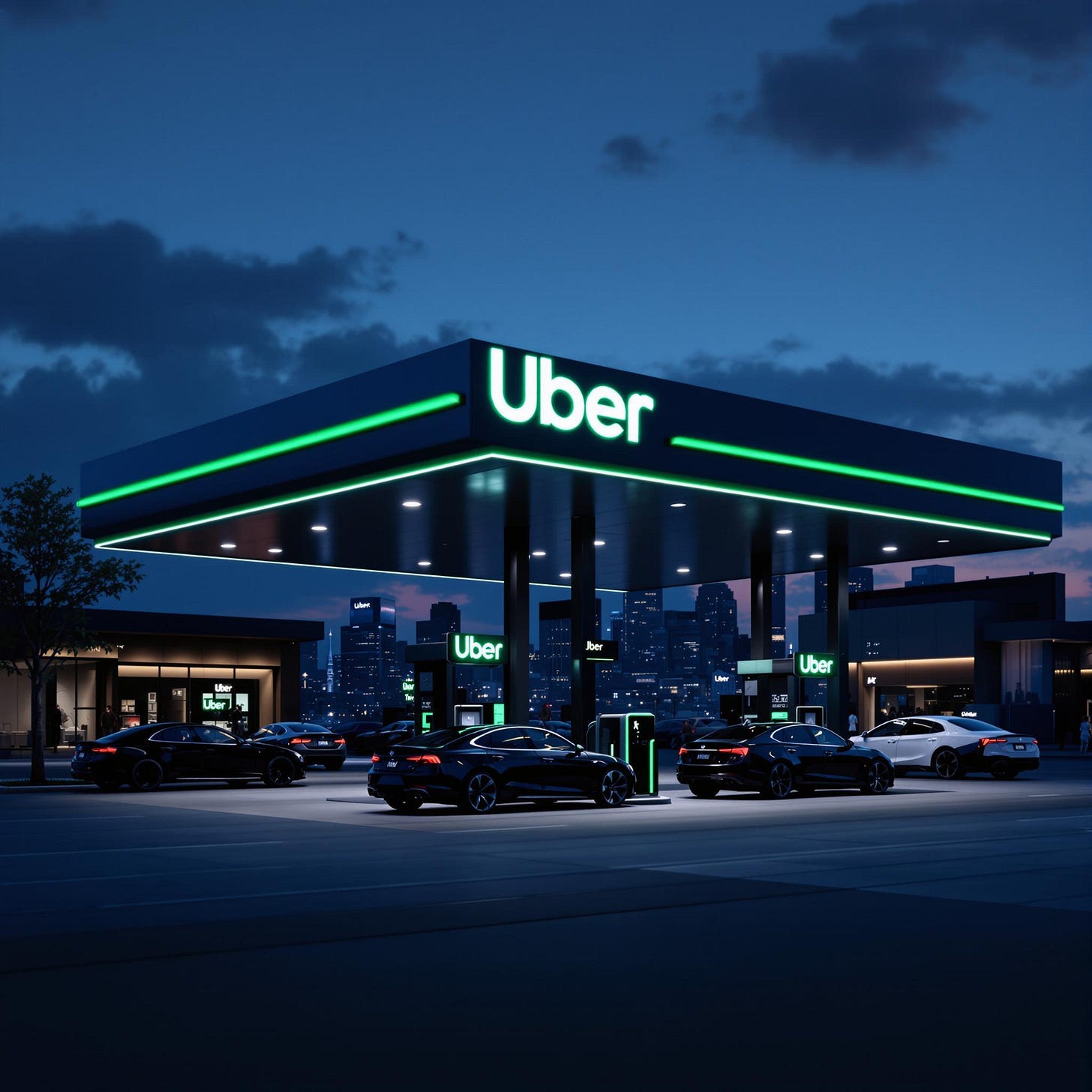Beyond Rides: Why Uber's Future Might Be at the Pump
This week we return to our regular short-form format.
Beyond Rides: Why Uber's Future Might Be at the Pump (3 min)
Why doesn’t Uber operate a network of gas stations?
Uber’s core mission is to move people (and increasingly goods) from Point A to Point B with speed, convenience, and affordability. But there’s one challenge that’s central to their business, yet tangential to their daily operations: fuel.
There’s going to be some handwavy math below, detailed figures are given at the bottom of the post
Uber doesn’t release data on how many miles are driven per year but if we take their headline figure of 10B rides/year and estimate 7 miles per trip on average, we can arrive at 70B miles driven per year + an additional 20-30B miles in “dead” miles driving to and from pickup locations. If we assume an MPG of 25 then we’re looking at ~4B gallons of gas consumed per year. 20% of Uber’s trips happen in just 5 cities (Chicago, Los Angeles, New York City, São Paulo, and London) so let’s say 2.4B gallons of gas in the their top 3 US cities. Now let’s assume that Uber drivers end up utilizing the Uber stations 50% of the time so Uber is going to need just over a billion gallons of gas a year to service Chicago, Los Angeles, and NYC.
According to various “gas industry” publications, an average gas station owner should expect to see something like .05/gallon in net profit which Uber can give to the drivers right away. However, Uber has 3 advantages that will lead to lower prices.
First they can charge drivers using their Uber earnings balances which means no credit card processing fees. This is an immediate 3% savings per transaction. Then they can commit to purchasing a billion gallons upfront/year (or maybe even buy an oil refinery from Delta), which would suggest a 10-15% savings. Finally, they can use the stations locations as a way to pre place inventory (drivers) in optimal locations without having to resort to surge pricing.
On the driver side, drivers will get cheaper gas (to the tune of ~$100M saved/year by drivers in these 3 cities) which is one of the highest input costs for their work, increased loyalty to uber, and presumably access to clean restrooms which are a common driver complaint.
While the capex of building/operating a couple hundred stations and the infrastructure necessary to service them is not a small task, one could argue that it’s attractive for Uber’s next stage of growth. Physical footprints in the form of gas stations would allow Uber to expand into areas like “15 minute delivery” or “Last mile package delivery” easily. Additionally, this is a move that could only be done by the market leader. The best Lyft could hope to compete with is a loyalty card tied to a network like Shell or Chevron with a small discount attached to it.
Uber Mile Calculation: 9.448B trips x [(30% x 5 miles) + (15% x 15 miles) + (55% x 7 miles)] = 9.448B x [1.5 + 2.25 + 3.85] = 9.448B x 7.6 miles per average trip ≈ 71.8 billion total miles driven
How satisfied were you with this week's issue?
Let me know what you think in this 3 question survey
Thanks for making it this far and I hope you found this as interesting to read as it was to write.
I know it’s been a long hiatus but I’m back in SF after 4 years of traveling. If you’re in town and want to grab a coffee and chat, let me know with a reply to this issue’s email.
As always,
Roosh → You


